Multifamily Collective
Today, we celebrate the 4th of July in America, which resonates with the spirit of freedom and unity.
America is a beacon of hope; its vast and stunning landscapes and diverse communities are a testament to resilience and innovation.
For the Multifamily Collective Community, this day underscores our shared commitment to serving humans who touch the housing space in some way, shape, or form. From visionary city planners to developers to the onsite teams who run the day-to-day.
The American dream lives in every apartment we develop, every family we serve, and every community we uplift.
As we enjoy the fireworks and festivities, let’s remember the past, cherish the present, and look forward to a future of endless possibilities.
America’s greatness lies in its ability to dream big and achieve even bigger.
Share this:
The Dyson Paradigm and Industry Disruption: A Multifamily Perspective

When I recorded Episode 1,553 of The Multifamily Collective podcast, I was inspired by a compelling narrative around innovation and disruption using the story of Dyson vacuum cleaners. Dyson challenged the status quo in an industry that operated on the same “buy cartridges, dispose of cartridges” premise that razor companies employ. The overarching message was about breaking molds and embracing change—a universal tenet not exclusive to the vacuum cleaner industry but exceptionally pertinent to property management.
Changing Consumer Behavior: The Headwinds
Dyson had to fight against consumer behavior and existing industry norms. In the multifamily industry, there are similar circumstances. We often find ourselves stuck in methods and strategies simply because that’s how they have always been. The inertia of the past can be a significant obstacle to transformational change. The biggest hurdle often isn’t the introduction of new technologies but rather the necessity of retraining a consumer base conditioned to traditional practices.
The Multifamily Industry: Poised for Change
In light of the rapid pace of change and technological advances in artificial intelligence, internet accessibility, and social media, I contend that the multifamily industry is at a pivotal juncture. In my head, there will be massive shifts in the next 18 to 36 months. One example is the potential phasing out of computers from desks. BOLD, I know! But these changes aren’t mere adjustments but foundational changes that will redefine the industry’s operations.
Voice Command and User Experience
I speculate that voice-activated AI interfaces, like Google Voice, Siri or Alexa facilitated through your iPhone or other handheld device, will become increasingly pivotal. Physical screens might become obsolete as we transition to voice-command systems that allow us to execute operations. Imagine querying the status of a specific apartment’s availability through voice commands, eliminating the need for multiple software interfaces. The interface and the experience (UI and UX) will become increasingly invisible, more nuanced, and extraordinarily efficient.
The Dyson Takeaway
The Dyson paradigm is an allegory for the multifamily industry. We’re on the precipice of colossal changes impacting everything from managing portfolios to engaging with technology. The question isn’t if these changes are coming but how swiftly we can adapt and innovate.
The Need for Proactive Measures
For those multifamily industry veterans, considering contrarian technologies and embracing revolutionary ideas should be the way forward. From blockchain for transparent transactions to augmented reality for virtual property viewing to touchless e-commerce apartment leasing transactions—these are not pie-in-the-sky ideas but the near future. Those who act decisively now will be the ones shaping the future landscape.
Recommended Products:
Share this:
Customer Service vs. Hospitality: Crafting Unforgettable Resident Experiences

Photo by Izz R on Unsplash
Customer service and hospitality are often used interchangeably. While they might seem synonymous, understanding their subtle distinctions can dramatically alter the resident experience. Let’s dive deep into these concepts.
The Bedrock of Customer Service:
At its core, customer service is transactional. It’s the necessary foundation upon which multifamily communities operate. Consider customer service as the diligent employee ensuring all community amenities function correctly, quick responses to maintenance requests, or the systematic leasing and resident management approach. It’s about addressing needs, solving problems, and ensuring operations run smoothly.
Customer service is the baseline. In the multifamily space, customer service ensures resident satisfaction at the most basic level. The community’s amenities may be top-notch, the grounds may be immaculate, and the apartments may boast the latest finishes. But if customer service falters – if maintenance requests go unanswered or community policies are applied inconsistently – resident trust erodes.
The Magic of Hospitality:
Now, here’s where the magic happens. Hospitality goes beyond mere transactions. It’s about crafting experiences, building relationships, and making residents feel at home. Hospitality represents the soul of a community, where every interaction is a chance to create memorable experiences.
Will Guidara, an influential figure in the hospitality sector, aptly describes hospitality as the art of making someone feel seen and valued. This might manifest as a personalized welcome package for a new resident in the multifamily space, remembering residents’ birthdays or even acknowledging their day-to-day triumphs and challenges.
Multifamily communities aren’t just about buildings and amenities. They’re about people, emotions, and the essence of ‘home.’ Hospitality, in this regard, is about the heart – the human connections that transform a mere residence into a cherished community.
Striking the Right Balance:
While customer service ensures that the multifamily community functions effectively, hospitality ensures it thrives and resonates on an emotional level. Both are integral, but they serve different purposes.
For instance, a resident might renew their lease because the community offers consistent customer service – their maintenance requests are always addressed promptly, and community policies are clear and fair. But what if we could elevate this experience? What if, on top of excellent customer service, the resident felt a deep connection to the community and valued and cherished every interaction with the team? That’s the difference hospitality makes.
Crafting Memorable Experiences:
The insight here highlights the importance of viewing communities not just as properties but as ecosystems of relationships. Realizing every touchpoint, from leasing to daily interactions, is an opportunity to go beyond the expected and venture into the realm of the unforgettable.
The overarching point is that while a community needs to ace its customer service game, hospitality differentiates one community from another. Hospitality fosters resident loyalty, crafts a vibrant community culture, and sets a property apart in a saturated market.
In Sum
Understanding the interplay between customer service and hospitality is the difference maker in multifamily. While customer service forms the foundation, hospitality is the secret sauce that turns residents into passionate advocates. Multifamily operators and professionals have an opportunity to craft experiences that satisfy residents and truly enchant them.
Share this:
Comprehensive Team Member Onboarding Plan

Photo by Tim King on Unsplash
Onboarding new team members is a crucial part of the hiring process, as it sets the tone for their experience at the company and helps them integrate into the team. A comprehensive plan can ensure new hires understand their role, responsibilities, and the company’s culture, policies, and procedures. Allow me to share a framework:
Step 1: The first step in structuring an effective plan is to define the goals and objectives. The plan should have a clear purpose and align with the company’s overall goals and values. Some common objectives of an onboarding plan include introducing new team members to the company’s culture and values, familiarizing them with their job responsibilities, and helping them build relationships with their colleagues.
Step 2: Next, create a timeline. This will help ensure that all necessary steps are taken and that new hires clearly understand what to expect during their first few weeks on the job. The timeline should include key milestones, such as the first day of work, training sessions, and supervisor check-ins.
Step 3: Identifying the key players in the onboarding process is important. This includes HR team members, managers, and colleagues working closely with the new hire. Each individual should have a clearly defined role in the onboarding process.
Step 4: Training and orientation are two of the most important aspects of the onboarding process. New hires must know the company’s policies, procedures, and best practices. This can include training sessions, mentorship programs, and job shadowing opportunities.
Step 5: It’s important to communicate the company’s culture and values to new hires. This can include providing a handbook outlining the company’s mission, vision, and values. It can also include introducing them to key team members and sharing stories about the company’s history and culture.
Step 6: Onboarding is not a one-time event. It’s an ongoing process that requires ongoing support and feedback. Managers and colleagues should provide new hires with regular check-ins and feedback to ensure they adjust to their new roles and the company culture.
Share this:
Gamifying Onboarding

Photo by Erik Mclean on Unsplash
In today’s multifamily business world, team member onboarding has become crucial to ensure that new employees have the necessary skills and knowledge to perform their jobs effectively. And it pays to be innovative in your approach.
One innovative way of ensuring that new hires are engaged and motivated during the onboarding process is through gamification. Let’s explore what it means and the importance of gamifying the team member onboarding experience and provide some ideas on how to do it.
First and foremost, gamification is a powerful tool for increasing engagement and motivation. Team members who are engaged and motivated are more likely to be productive and committed to their work. By gamifying the onboarding experience, new hires are more likely to be engaged and invested in the process. This can result in a faster and more effective process, benefiting both the employee and the company.
In addition, gamification can make the onboarding experience more enjoyable and memorable. New hires may feel overwhelmed by the information they need to learn during onboarding. Using game mechanics such as points, badges, and leaderboards can make the onboarding process more fun and engaging. This can help new hires to retain information more effectively and feel more positive about the experience.
So, how can you gamify the employee onboarding experience? Here are a few ideas:
- Create a scavenger hunt – Use clues and challenges to guide new hires through onboarding. This can be done both in-person and virtually.
- Use quizzes and assessments – Test new hires’ knowledge and offer rewards for correct answers.
- Offer digital badges and certificates – Create badges and certificates to recognize new hires’ achievements during onboarding.
- Create a game-based learning module – Develop a learning module that incorporates game mechanics, such as leveling up, to make the process more engaging.
- Implement a social learning platform – Encourage new hires to collaborate and learn from each other in a social learning platform. Incorporate game mechanics, such as leaderboards, to increase engagement.
Share this:
- Page 1
- Page 2
- Page 3
- Interim pages omitted …
- Page 10
- Go to Next Page »

